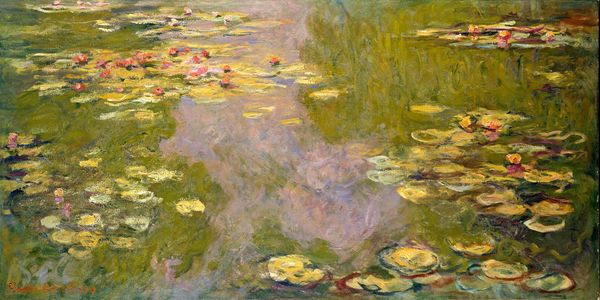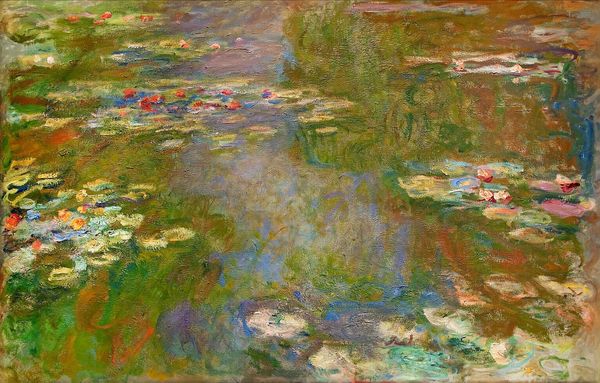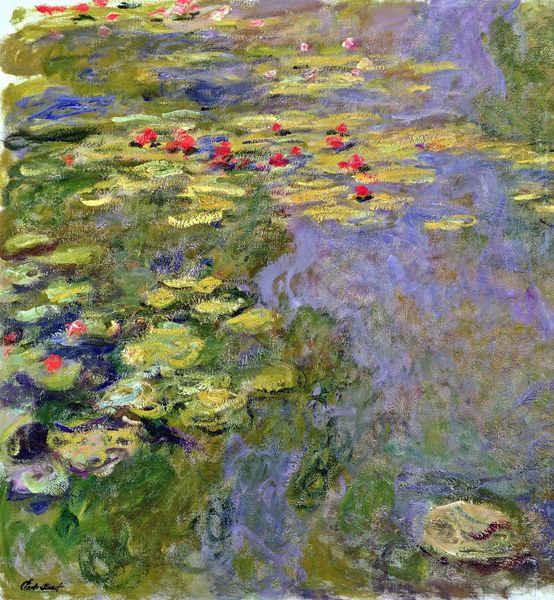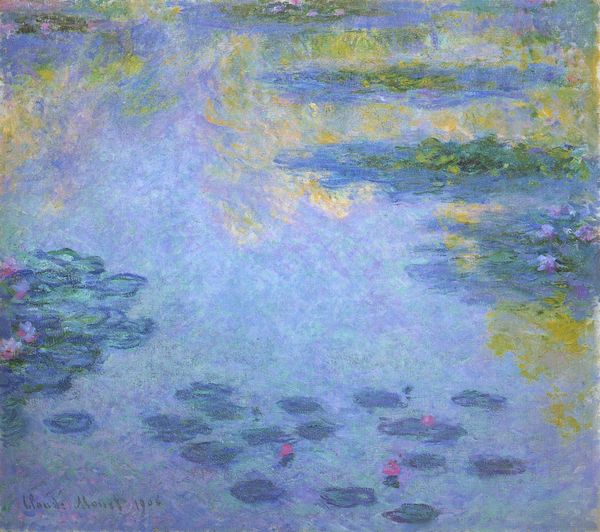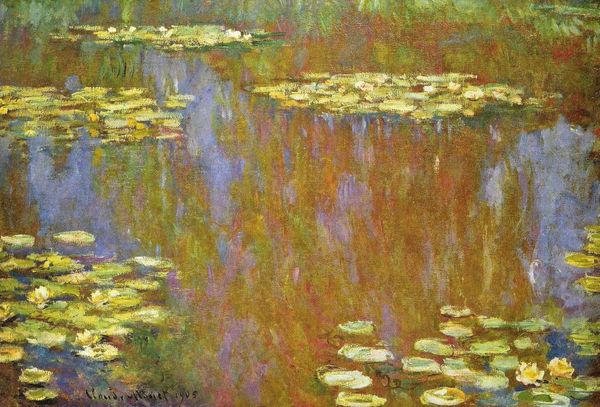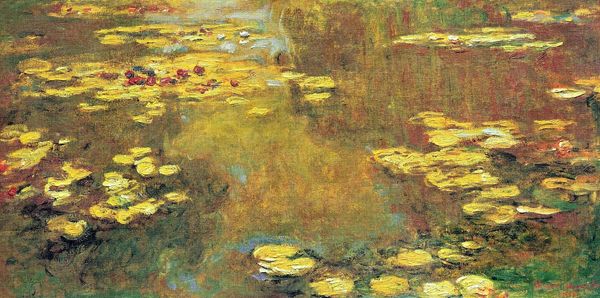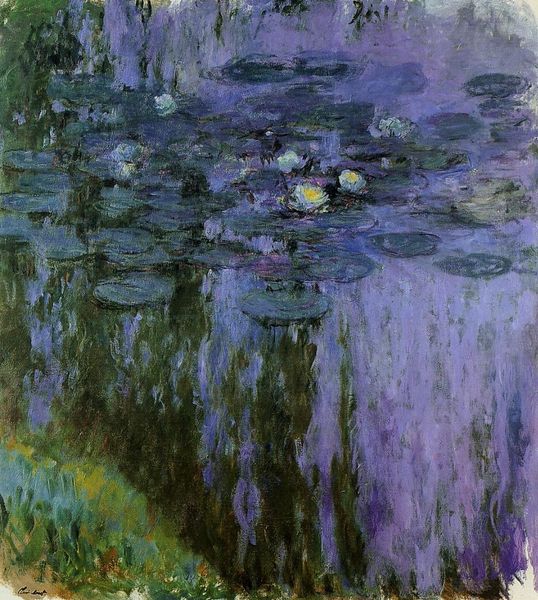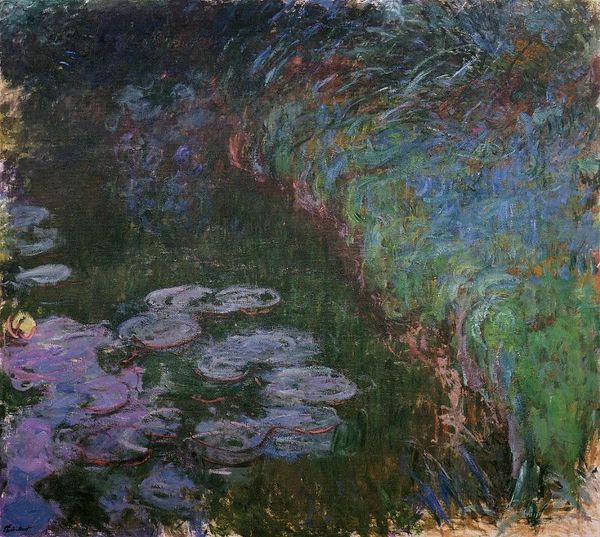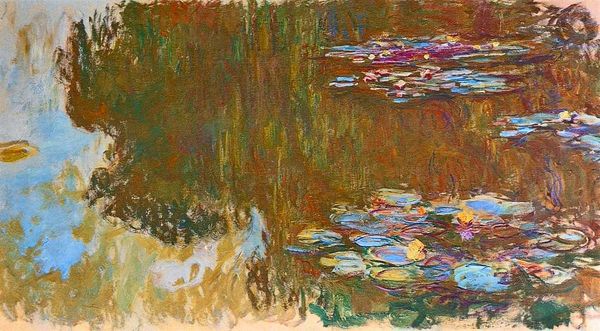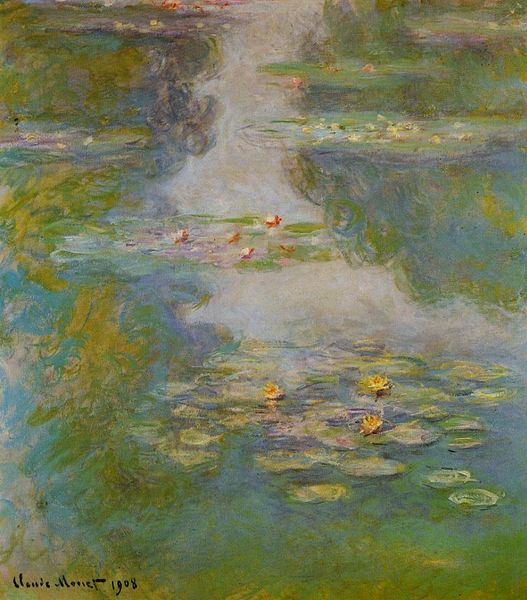
Copyright: Public domain
Editor: So, this is Claude Monet's *Water Lilies*, painted in 1919. The textures created by the oil paint are really captivating; there's a serene yet almost melancholic feel to the whole piece. How do you interpret this work? Curator: I see it as a reflection of Monet's complex engagement with the world after the first World War. It’s not simply a pretty picture of flowers. Think about it: he's painting these in the aftermath of immense global trauma. The ethereal quality, the blurring of forms – does it evoke a sense of disorientation to you, perhaps mirroring the shattered reality of the time? Editor: That's an interesting perspective. I was focusing on the beauty, but your point about the historical context shifts the way I see it completely. Curator: Exactly! The *Water Lilies* can be understood as a powerful commentary on loss and regeneration. He started this project shortly after the loss of his wife and eldest son; furthermore, post-war French society was trying to recover and rebuild, both physically and spiritually. These weren't easy things to do! So, are these paintings only decorative, or do they speak to something much deeper? Consider how his failing eyesight impacted his representation, as well. Editor: It sounds like it's about seeing and understanding things through multiple lenses. Curator: Precisely. This piece reflects Monet’s personal grief as well as collective trauma, pushing against the traditional role of landscape art and urging us to consider the interconnectedness of individual experience and social reality. Editor: I'll never look at a water lily the same way again. It’s much more nuanced and layered than I initially thought. Curator: Hopefully, we can learn how artworks help us to reevaluate our contemporary time.
Comments
No comments
Be the first to comment and join the conversation on the ultimate creative platform.
